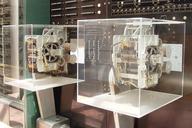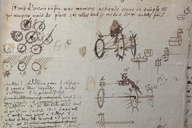The Prehistory of Computing, Part II

In part I of this two-part series we covered lookup tables and simple devices with at most a handful of moving parts. This time we’ll pick up in the 17th centuries, when computing devices started to became far more complex and the groundwork for later theoretical work began to be laid.
Pascal We enter the era of mechanical calculators in 1642 when Pascal invented a machine, charmingly called the pascaline, which could perform addition and subtraction:
The Prehistory of Computing, Part I

What is a computer, really? Where did it come from? When did we realize we could trick rocks into doing our math homework for us?
In this two-part series, I’ll cover the origin and early history of computing and computer science, starting in prehistoric Africa and ending in Victorian-era England. Not exhaustively (because that would require an entire book) but selectively, highlighting the most interesting innovations and focusing on the untold (or at least less well known) stories.
The Art and Mathematics of Genji-Kō

You might think it’s unlikely for any interesting mathematics to arise from incense appreciation, but that’s only because you’re unfamiliar with the peculiar character of Muromachi (室町) era Japanese nobles.
There has never been a group of people, in any time or place, who were so driven to display their sophistication and refinement. It wouldn’t do to merely put out a few sticks of incense; no, you would have to prove that your taste was more exquisite, your judgment more refined, your etiquette more oblique.


